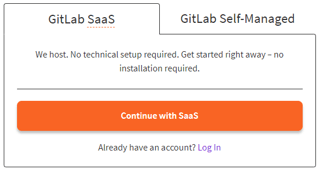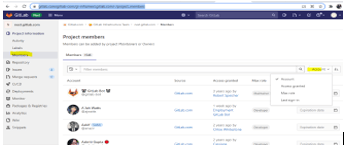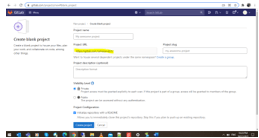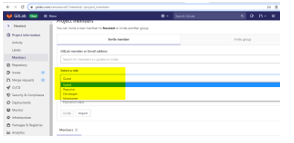Updated April 15, 2023
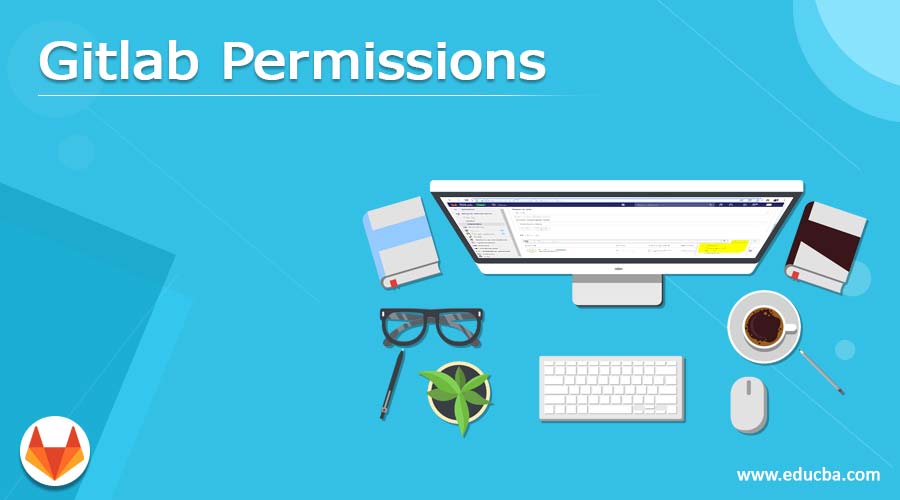
Introduction to Gitlab Permissions
GitLab permissions are one of the positions that will play with the group or project that the users have the highest role in the member of both the user project’s group and the project itself. The highest role is used to follow the members manually to add or import a user it gets added to the member’s list. if they have a GitLab account and it receives the mail if we need an email address also the user does not already it will be prompted to create the email address provided in the invitation for each user.
Overview of Gitlab permissions
The Owner role is inherited by its projects and is only possible at the group or personal namespace level in the project. It will maintain and is the greatest project-level position for some operations that can be operated and performed by each individual owner of the personal namespace or group, and it is used to create the instance administrator with full fill user permissions. It depends on the maximum number of positions that they are played in each group or project users with n number of skills if the role is high then it will be utilized with each user in the project’s group and the project itself.
Gitlab permissions Guide
There are several types of permissions in GitLab for accessing the user operations, and all of them should be considered when designing anything that interacts with permissions needed. It has n number of permissions like general permissions that are related to the Groups and Projects should be considered as the general permissions. It will access across through the access modifiers like public, private and internal each of them should be as a separate entity for users visible.
Permissions in the project
The GitLab is the generally web-based DevOps life cycle tool that will provide the data to the Git repository managers. Since it’s an Open source so the license will be provided online with the issue tracking, deployment pipeline features for needed permissions, and access for the users.
Generally, it contains two types of Gitlab like Gitlab SaaS and Gitlab Self-Managed,
https://gitlab.com/gitlab-com/gl-infra/next.gitlab.com/-/project_membersHere I have a Gmail login so I can choose the Already to have an account? Log In option automatically navigates and moved to the Login Page,
The above Gitlab is the newer version so it has some updated changes in the user login. If I select the project members it listed the group of members associated to the GitLab project maintainers or owners. Basically, we first create the New project to set up the permissions,
Create a blank project it automatically creates the Project URL,
After being given the project name and select create a project the project is created successfully,
Then navigate to the Project Information -> Members it shows two types like Invite member and Invite group If I give the user email address it will automatically add the project,
Select the roles using the below option,
And also the access expiration date is nothing but when the project delivery time once it’s over the user access is automatically deactivate the project.
We can filter the user information by using the below filter options,
If I worked with the n number of users with the same project then I will create the group using the Invite group option then it looks like the same above steps.
Types of Users:
Generally, Gitlab has four types of users like below,
1. Guest
2. Reporter
3. Developer
4. Maintainer
Guest:
It is the user which has a separate user session once the session is logout it automatically deletes the user data. The Guest users are people who don’t have an account and want to utilize a hotspot to connect to the Internet via a network available at all places.
Reporter:
It is the type of user which runs the reports and used the standard advantage of the typical features for printing and exporting the data. It has no limitations for accessing the data in the company or project. The user must be a member of any of the security groups to access Insight.
Developer:
We already know about the developer role the name itself to identify the permissions. It will be the main role for implementing the project. It also tests the project data using Unit testing etc.
Maintainer:
It is the organizing user who maintains the projects it is also known as the Admin user for accessing all the above user roles and data. This the user assigned the roles of the other project members.
How to Working with user permissions
It is the main part of the project after adding the users to the project, then we must be assigned the permission and roles to the project for each user. If the user is in Guest he/she will be working with the project as the Guest user. Once the user session is overall the data will not be saved again the user will cerate or working to the project again. If suppose the user is in Reporter mode then the User inherited their role from the other groups which contain the project. From both the inner and outer sides of the project from the members. So the user directly assigned to the project it’s a direct member for listed the data. The expiration date can be changed if a user is a direct member of a project. Then the parent group’s membership is inherited from the expiration date can only be changed by the parent group. The developer is the heart of the project so the role users will implement the project with a time duration. Maintainer role users are to maintain the project members till the project is delivered.
Conclusion
The GitLab application allows for automating the whole DevOps life cycle project, from planning to creation, build, verification, security testing, deployment, and monitoring. It is the most highly scalable application that may be hosted on-premises or in the cloud environment. It also n number of pipelines application projects and million number of users for working premises.
Recommended Articles
We hope that this EDUCBA information on “Gitlab Permissions” was beneficial to you. You can view EDUCBA’s recommended articles for more information.
